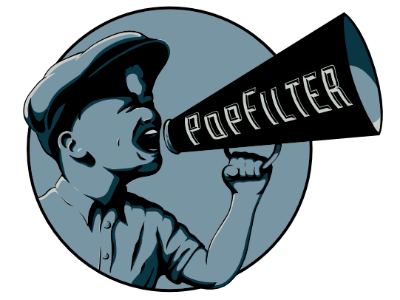Pop Science: Lesson 2, Intro to Mythbusters
Hey, kids! This week I’m going to teach you about the S&M of science that is Mythbusters! They are a source of pleasure (’cause, hey, the show is pretty cool), and pain (’cause they are so unscientific that they make anyone who has done real research strain her arm shaking her fist at the TV).
Perhaps the classiest way to describe what is wrong with the show is to say that it shits in the mouth of statistics. The field of statistics gets shit on enough already. Sometimes it deserves it, sure. But you had better know a lot about statistics before you drop trou and squat over its face. It’s like when you are complaining about your family and someone else joins in and you get pissed off. And Mustache and Ginger give no indication that they know my family well enough to squeeze out a loaf in its face-hole.
Yes, I understand, the show is entertainment. I made the mistake of bringing up how unscientific the show was at a party, and people patiently explained to me that the show was made for entertainment purposes. I understand, douches. You know what else is (basically) made for entertainment purposes? Websites. Radio. TV news shows. And they all demonstrate the same flawed thinking with regard to statistics that the Mythbusters do. Most people who start sentences with “Well, researchers have shown…” get their information from entertainment-based science. The consumers are not trained, and the purveyors are not self-critical. So the science you heard from a friend who heard it from (insert medium here), is most likely misrepresented, misremembered, or bullshit to begin with. No one’s checking. Except for me. And now you.
So let me make good on my promise to fuel your self-righteous indignation and skepticism toward all pop science. Here is an introduction to the essential things you will need to know to judge whether an experiment was done well:
A. Controls
B. Sample Size
C. Probability testing
D. Effect Size
Each of these will be addressed in turn in upcoming articles. These are very basic concepts, but each one has a pie-hole full of poo thanks to Mythbusters. They are also sometimes overlooked in major scientific papers in even the best journals, which is horrifying, but kinda super sweet if you get off on being condescending. Try this on for size “Sure, that article in Science had signficant p-values, but its effect sizes were weak and they didn’t use appropriate controls.”
Stay tuned in this multi-part series that will allow you to un-bust every myth Mustache and Ginger have ever claimed to bust, but probably not entirely ruin the show for you because data are data, and even bad science can yield some information. And explosions.


